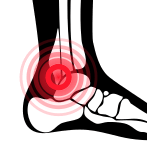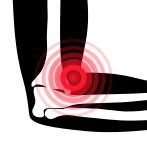Calling all athletes, most specifically those who play ice hockey, soccer, football, golf, and ballet! It’s great to be active and do the sports you love, but did you know that you might be at risk for a hip labral tear?
Hip labral tears are not just for the sports superstars, though. Structural abnormalities of the hip joint can also result in a hip labral tear. While this condition can come on suddenly or may be gradual, the best course of action to take if you have hip pain is to turn to the experts at Next Level Physio.
What is a Hip Labral Tear?
The hip is a ball-and-socket joint. The head of the femur bone (thigh bone) acts like a ball that fits into the pelvis, which acts like a cup. Together, the two are like a baseball that fits perfectly into a glove.
Now the labrum is a piece of rubbery cartilage that acts as a cushion and a seal to hold the ball in place A hip labral tear is when the labrum gets injured. This could be due to an injury, structural problems, age, and more.
Signs & Symptoms of Hip Labral Tears
Pain and stiffness are the two most common symptoms of hip labral. Other signs of a hip labral tear may be
- Pain in the groin or buttocks area
- Clicking/locking sound in the hip area when you move
- Feeling unstable when standing on two feet
- Increased pain when rotating hips, exercising, or playing sports
It is important to note that some people with hip labral tears experience no symptoms at all.
What Causes a Hip Labral Tear?
Many different things could cause a hip labral tear, just some of which include:
- Structural issues. Abnormal hip movements like those that result from femoroacetabular impingement (FAI) are the most common causes of hip labral tears. If left untreated, FAI could turn into osteoarthritis.
- Hip injuries. Athletes are prone to hip labral tears, as are those who engage in repetitive activities or high-impact movements. Yes, we’re talking to you CrossFitters.
- Age and degenerative health conditions. Osteoarthritis is a long-term condition that results in worn down cartilage between the joints. Age and weight increase the risk of developing osteoarthritis. The two most common places in the body that people experience it are the hips and the knees.
How to Diagnose a Hip Labral Tear
Your physiotherapist will conduct a physical exam to determine if you have a hip labral tear. They’ll probably ask you to move your leg and walk around to see what the pain is like. They may also refer you to see a specialist to run imaging tests like X-Rays and an MRI to analyze the fine details and see how severe the tear is.
Treatment for a Hip Labral Tear
Physical therapy is one of the most readily prescribed nonsurgical treatments for hip labral tears. By working with a physical therapist who specializes in hip rehab and recovery, you’ll engage in specific exercises that both stretch and strengthen the hip muscles.
Next Level Physio Physical Therapy for a Hip Labral Tear
Your hips deserve to be happy and Next Level Physio is here to make that happen. We deal with hip pain all the time, which means we know just what you need to get back on the path towards pain-free living. Our goal is simple: help you heal without medication or surgery. In addition to physical therapy for hip labral tears, we also work with patients for conditions including:
- Sports injuries
- Pre-surgical rehab
- Post-surgical rehab
- Neck pain
- Shoulder and elbow pain
- Vertigo and concussion
- Wrist and hand pain
- Ankle and foot pain
- Sciatica/back pain… and more
Some of the physical therapy methods we use for pain treatment include:
- IASTM Technique
- Blood Flow Restriction Training
- Therapeutic Exercise
- Shockwave
- Cold Laser
- Australian Manual Therapy
- Cupping, and more
Click here to schedule an appointment and a free consultation.















